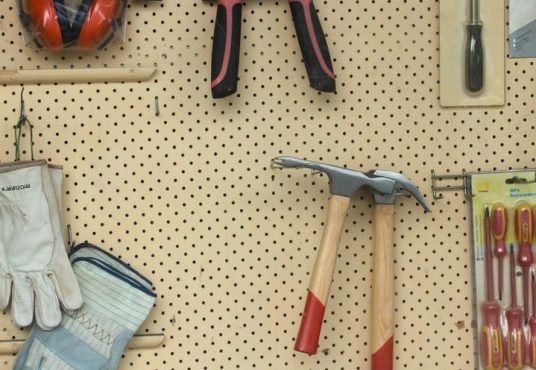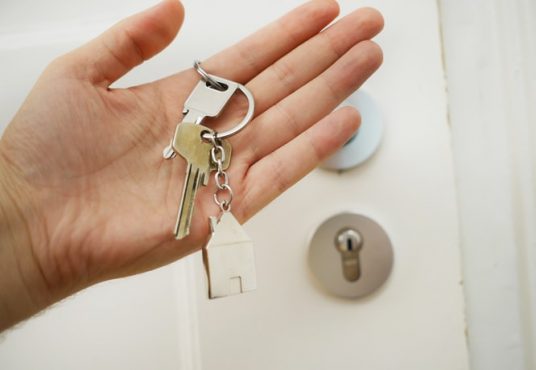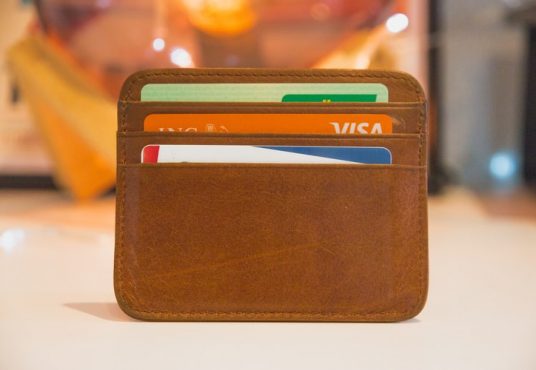So you’ve decided it’s time to downsize and you’re likely wondering where to start.
We are going to take a look at the concept of downsizing and how to make the process as simple and efficient as possible.
There are a lot of reasons for downsizing, such as:
– Becoming an Empty Nester whereby your grown children moved out leaving your nest a little empty
– The needs of the family may shift
– You enter your Retirement stage of life or
– Your Income changes
No matter the reason for downsizing, the process is pretty much the same. We will take a look at how to get the downsizing ball rolling and how to decide what to keep and what to let go of.

Where are you in the process? Have you already started?
Steps to downsizing
There are many steps involved in downsizing your space and while everyone will mold it to their unique needs, more often than not, most people end up going through the following steps:
1. Contemplation – really deciding what is needed, their goals behind the transition, and how they envision going about it.
2. Sorting – and lots of it! This is the stage that most people identify with downsizing, going through all the things.
3. Making the move – once planning is all set, and the purge is complete,
4. And often, reassessing again!
Of course, there are plenty of half steps in between too!
The first step in downsizing is figuring out how much space you will need in your downsized home.
Keep in mind that it’s not about moving into the smallest space possible. It’s important that your new space, while smaller, is fully functional for your needs.
Start by asking yourself these questions:
– Do you need a home office?
– Do you have frequent visitors and need space for guests?
– What about pets? Will your furry friends require a yard to call their own?
– Do you have children? Will they share a room?
– Do you love to entertain and need a spacious kitchen?
It’s important to note that downsizing your physical space doesn’t always mean downsizing your investment. Depending on the location and amenities you need, your downsized home may save on space but make a bigger impact on your budget.
When downsizing, letting go of possessions is one of the most challenging tasks that individuals face.
When you consider this, what comes to mind as something you expect to have the most trouble parting with?
Is there anything you’ve bought and never used, but can’t let go of?
Maybe you a have room dedicated to all of your “extras” you’ve been dreading going through?
Buyers have more power when the purchase of their new home doesn’t depend on the sale of their current home. This may mean that you sell your current home and rent another living space until you find your perfect downsized home. While this sounds like a pain, it may offer you some financial perks by not having to rush into a sale by a certain deadline or push you into taking money from other sources, like a retirement savings, to cover some of your buying costs.
You’ll need to also look at your finances to see if it’s wise to pay cash for your new home or to finance. You’ll want to consider if your rate of return on investing the profit from your first house is as good as the return as the after-tax cost of a new mortgage.
Other financial considerations:
– 15 vs 30 Year Mortgage
– Adjustable-Rate Mortgage
When downsizing, make it a goal that every item that you move into your new, smaller space is something you can’t live without.
One way to do this is by actually stating the use for each item as well as how much value you place on it. For example, maybe you have a kitchen appliance that you’re certain you’ll use, but can’t quantify how often. Ask yourself – if it’s only used once a year, could you live without it?

Once you have taken care of the financials and have secured your new, smaller space, you’ll need to take a look at the belongings you currently have.
This is where things can get tough. It’s easy to become attached to things that you don’t really “need.” You need to keep in mind that the goal of downsizing is to learn to let go of the things so that you can enjoy your new space.
Step one is to take a long, hard and very honest look at how you live your daily life. Take a visual inventory of everything in your current space. Have you used it in the past year? Past 6 months? Past 3 months? This is where it can become hard to be honest with yourself.
You may have bought that treadmill sitting in a corner with the best of intentions, but it’s only held clothes or boxes for the past year. Or perhaps you bought that beautiful chair that sits in the formal living room that has been unused for the last year because you prefer the use of your family room instead. These items are often the first items on your “Do Not Need” list.
Start by letting these things go first. Consider selling, donating, or throwing away items as necessary.

Clean spaces with minimal clutter allow the mind to focus and not become distracted by excess clutter.
Most people actually feel different in organized spaces. Have you ever noticed this yourself?
After buying your downsized home, measure each room. It may even be helpful to map out the floor plan with dimensions.
Once you have an idea of the limitations of the physical space in your new home, it’s time to see if the big items in your current home will fit into your new space.
If you’re downsizing into a home with less physical space, some choices may come more easily. If you’re going from 4 bedrooms to two, for example, you can decide which bedroom sets to keep and which to donate. Afterall, you won’t need four in your new space. Right?
If you have an eat-in kitchen and a formal dining room and your new space only has an eat-in kitchen, it’s time to let that dining room set go.
When it comes to other larger staple items like your couch, chairs, etc, measure your current pieces and see if they will fit into your new space. For some, your big move may require the purchase of new furnishings to fit your smaller space.
Sell or donate the large pieces that will not fit into your new space. It may be tempting to put these items into storage because you may not be ready to let them go. But don’t fall prey to the temptation, you’ll be paying for sentiment and you’re defeating the purpose of spatial freedom by paying for storage for these items!
Minimalism

Downsizing and minimalism go hand in hand.
Minimalism has received a reputation as a fad due to the trendy on-the-go social media lifestyle, but that’s not where it stops! Minimalism, in fact, is a strategy used to pursue (and achieve) a level of personal freedom.
Lessening one’s tie to materialistic things strengthens their values to things that simply money can’t buy. In other words, holding on tight to that extra area rug to show off your wealth, means nothing when you have good company to share your home with.
See what I mean?
While your new space is still empty, take a close look at the storage capacity available to you in your new home. Compare the storage space with the list of belongings you currently have.
There will be essentials that you move to your new home that will require storage. Give these items first priority. What are your kitchen essentials? For example, pots, pans, smaller appliances all require storage space.
What items can find a home in your smaller space?
Are there appliances that you own that can do the job of multiple appliances, allowing you to get rid of others that you no longer need?
For example, an electric pressure cooker has multiple functions – rice cooker, veggie steamer, roaster, etc. Give this appliance a place in your new home, but sell or donate your rice cooker, veggie steamer, etc that don’t need to come along.
Since you’re eliminating two bedroom sets, consider downsizing your bedsheets, pillowcases, and covers as well. You won’t need linens for 4 bedroom sets when you only have two. Consider the closet space in your new home and what linens you can keep. If your new space has fewer bathrooms, consider downsizing the number of towels, washcloths, and hand towels as well. Your linen closet is likely to be much smaller than you’re used to.
Take your old house and compare it to your new home, room for room to help you decide what can stay and what needs to go.
When downsizing your home, focus on pieces that serve two purposes: function and beauty.
Time for the great purge!
First up, tackle your current storage spaces that tend to collect the most “stuff.” For most people, the attic or garage/shed will be the first place to start. These are also the places with the most amount of “stuff” that you haven’t seen in years that you can likely take directly to a thrift store for donation or offer for sale easily.
It’s going to be a challenge to avoid the temptation to want to find these items space in your new home, but resist the urge, especially when they are items you haven’t used in the past year or more! On the other hand, your holiday decorations may be something that you do take from storage into your new home. You may find that you also need to downsize the number of decorations you have as well as your new space may not accommodate them.
Once you’ve tackled your storage spaces, take your current home room by room and allocate items into keep, sell, donate, and throw away piles daily!
As you narrow down your belongings to the essentials, consider how you will store and organize them in your new space.

As you pack for your move, pack items that will be stored together in the same containers. Label the containers for what room in the new house they will be going into. For example, pack your seasonal decorations in labeled bins with the space labeled as well, such as the garage, shed, and spare room.
Packing by room and location will allow you a much smoother transition into your new space and make unpacking a breeze!
For pictures and documents that you may have accumulating, consider digitizing. Scanning pictures can allow you to make necessary prints as needed and can free up a large amount of storage space. The same applies to your documents. Scan and store those documents on a digital drive and shred the originals. You can always print a copy of those documents as you need them.
Of course, there are some important documents that you can not digitize, try to narrow these items down to one filing cabinet or lockbox.
Don’t let the process of letting go of things hold you back.
But take what Joshua Fields Millburn and Ryan Nicodemus, famous minimalists, have claimed how practicing minimalism has influenced their lives:
“Minimalism has helped us…
– Eliminate our discontent
– Reclaim our time
– Live in the moment
– Pursue our passions
– Discover our missions
– Experience real freedom
– Create more, consume less
– Focus on our health
– Grow as individuals
– Contribute beyond ourselves
– Rid ourselves of excess stuff
– Discover purpose in our lives” (Source: https://bit.ly/2hOgvOS)

When your big day arrives to move into your new space, resist the urge to move the smaller items and boxes in first and instead, start with your furniture.
Moving in these big items first serves two purposes.
1 – You have the most energy for your move in the beginning so you are less likely to run out of steam.
2 – Having big items in place can allow you to bring in smaller items with a clear understanding of where they will go and the ability to move them straight into place.
Remember those boxes that you packed and labeled? Bring those in next and place them into the respective rooms where the contents belong. Avoid the temptation to dump all the boxes into one room or the garage, bring them in, place them in their proper space, and as time allows unpack each room one at a time.
Consider what spaces you’ll have an immediate need for first and prioritize those rooms. Bathroom, kitchen, and your bedroom are usually the first three rooms that you can get quickly squared away.
“If one’s life is simple, contentment has to come. Simplicity is extremely important for happiness. Having few desires, feeling satisfied with what you have, is very vital: satisfaction with just enough food, clothing, and shelter to protect yourself from the elements.” -The Dalai Lama
The simple truth is that for many individuals it will take time to fully embrace downsizing. If you find yourself with more boxes than you have space for, consider renting a small storage space for 6 months.
As you need items that have been put into storage you can retrieve them and find them a place in your new home. At the end of 6 months, reassess what you can sell or donate or what may be thrown away. If you can’t empty that storage container at 6 months, revisit it at 12 months and make it your goal to leave it empty and turn in your key. If you haven’t had a need for those items, you never will.
Downsizing your belongings is hard work, yet it is work that will bring much satisfaction for many years to come.
Are you ready to get started?!




